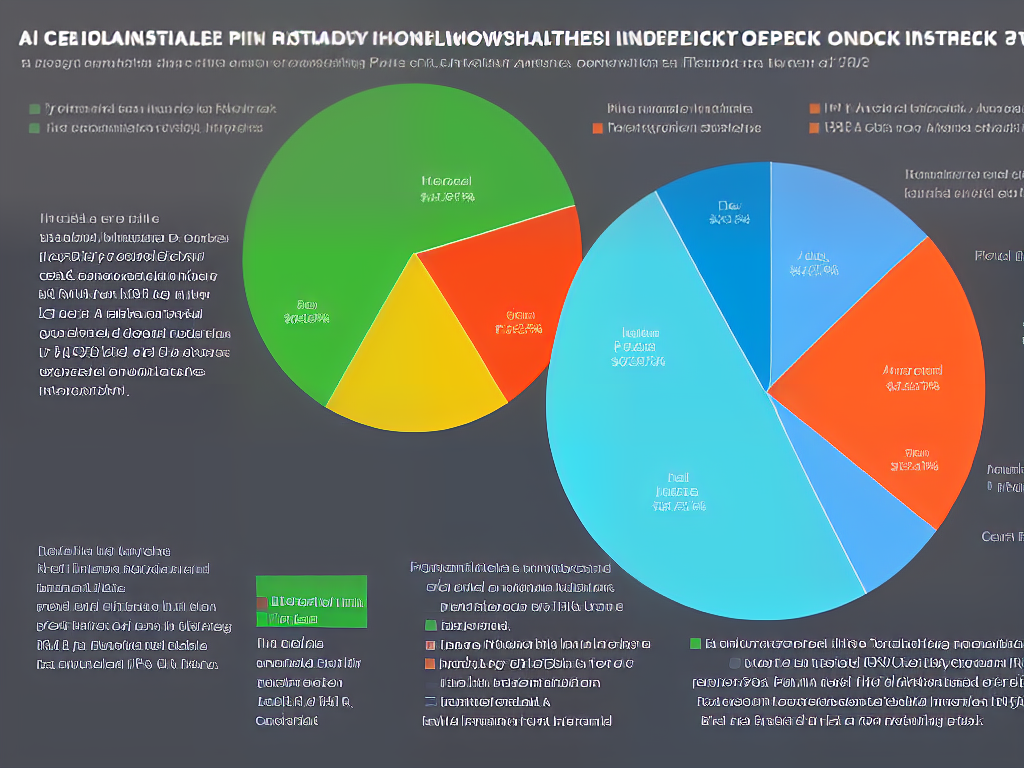IRA Contribution Limits and Diverse Knowledge
With an increasingly diverse range of retirement savings options available, it is essential to understand the ins and outs of various plans to make informed decisions for your financial future. One crucial aspect of this process is grasping the basics of Individual Retirement Accounts (IRAs) and their contribution limits. In this comprehensive guide, we will delve into essential topics related to IRAs, including understanding Traditional and Roth IRAs, income limits, distribution rules, and numerous investment options. This exploration will enable you to make the right choices in selecting retirement savings options suited to your individual needs.
Understanding Individual Retirement Accounts (IRAs) and Their Contribution Limits
One of the essential aspects of Individual Retirement Accounts (IRAs) is understanding the IRA contribution limits. These limits are set by the Internal Revenue Service (IRS) and are subject to change each year, typically adjusted for inflation. The contribution limit for 2021 is $6,000 per year, with an additional catch-up contribution of $1,000 per year, allowed for individuals who are 50 years old or older. It is crucial to stay informed on these limits to avoid taxes and penalties when contributing to your IRA.
Two primary types of IRAs are Traditional and Roth IRAs. Although they serve the same purpose of helping you save for retirement, they possess different characteristics, including their tax treatments. Traditional IRA contributions may be tax-deductible, depending on your income and whether you participate in an employer-sponsored retirement plan. The earnings in a Traditional IRA are tax-deferred, meaning taxes will not be due until you start withdrawing funds in retirement. In contrast, Roth IRA contributions are made with after-tax dollars; however, any earnings and qualified withdrawals in retirement are tax-free.
Income limitations also play a role in IRA contribution limits. For individuals with a high Modified Adjusted Gross Income (MAGI), the amount that can be contributed to a Roth IRA may be reduced or even completely phased out. In 2021, eligible contributions to a Roth IRA begin to phase out for those who are married filing jointly and have a MAGI of more than $198,000, and single filers with a MAGI over $125,000. Traditional IRA deductibility is also subject to income limitations if you or your spouse participate in an employer-sponsored retirement plan, such as a 401(k). Make sure to review the annual guidelines provided by the IRS to determine your eligibility and any limitations for your contributions.
In addition to the Traditional and Roth IRA options, there are other specialized IRA types that you may qualify for, each with their unique contribution limits and eligibility requirements. They include the Simplified Employee Pension (SEP) IRA and the Savings Incentive Match Plan for Employees (SIMPLE) IRA. These plans cater primarily to small business owners and self-employed individuals who need a more flexible retirement savings structure.
Optimizing your retirement savings strategy is crucial, and understanding your IRA contribution limits is an essential aspect of this process. Staying informed about various IRA types, income limitations, and potential tax advantages can help you make educated decisions on which IRA is most suitable for your needs. Additionally, it is important to keep track of annual adjustments to contribution limits and phase-out thresholds to avoid penalties and make the most of your retirement savings.

Understanding Annual Contribution Limits for Traditional and Roth IRAs
The Internal Revenue Service (IRS) sets annual contribution limits for both Traditional and Roth Individual Retirement Arrangements (IRAs) that greatly impact your retirement saving strategy. Comprehending these limits is vital for maximizing your savings and taking full advantage of the tax benefits offered by these accounts. It’s also important to be aware that the contribution limits might be adjusted annually by the IRS to account for inflation, further emphasizing the need for staying up-to-date with the IRA regulations.
For the 2021 tax year, the annual IRA contribution limit is $6,000 for both Traditional and Roth IRAs. This means that if you are under 50 years of age, you can contribute up to $6,000 in total to one or both of these accounts, depending on your eligibility. However, the sum of your contributions to both accounts cannot exceed the $6,000 limit. Keep in mind that these limits apply to both deductible and non-deductible contributions made to these retirement accounts.
In addition to the annual contribution limit, the IRS offers age-based catch-up contribution limits for individuals who are 50 years of age or older. For 2021, the catch-up contribution limit is set at $1,000, allowing individuals aged 50 and above to contribute a total of $7,000 to their Traditional or Roth IRA accounts.
It is important to note that eligibility for making contributions to Traditional and Roth IRAs may be restricted based on your income and tax filing status. As such, you should familiarize yourself with the income limits applicable to each type of IRA. For example, in 2021, single filers need a modified adjusted gross income (MAGI) of less than $125,000 to make a full Roth IRA contribution, while married couples filing jointly need a combined MAGI of less than $198,000. These income limits do not apply to Traditional IRAs; however, there are income-based limits that determine the deductibility of contributions.
Understanding the annual IRA contribution limits set by the IRS for both Traditional and Roth IRAs is crucial for retirement planning. These limits, which may change annually, play a pivotal role in optimizing your retirement savings strategy. Additionally, take advantage of age-based catch-up contributions if you are above 50 years old, and be aware of the income restrictions that can affect your eligibility to contribute to these accounts. Consult with a financial advisor or tax professional if you have any questions about your retirement savings plan.

Understanding IRA Contribution and Income Limits
One of the primary aspects to consider when planning to contribute to an Individual Retirement Account (IRA) is the income restrictions that affect your eligibility to contribute. These income limits largely pertain to Roth IRAs, impacting the amount you can contribute to your account based on your modified adjusted gross income (MAGI). Traditional IRAs, on the other hand, do not have income limits restricting contribution, but there are income limits impacting the tax-deductibility of your contributions. Keeping this in mind, it’s essential to understand these income limits and their implications on your retirement planning.
Your MAGI plays a crucial role in determining your eligibility to contribute to a Roth IRA. The MAGI is calculated by taking your adjusted gross income (AGI) and adding back certain deductions or exclusions from income, such as foreign income or housing expenses, student loan interest, and traditional IRA deductions. This figure is then used to determine if you’re eligible to contribute to a Roth IRA based on the IRS’s annual income limits.
For the year 2021, single individuals with a MAGI of up to $125,000 can contribute the full amount ($6,000, or $7,000 if 50 or older) to a Roth IRA. For those with a MAGI between $125,000 and $140,000, the contribution limit is reduced, and once your MAGI exceeds $140,000, you’re no longer eligible to contribute to a Roth IRA. Married couples filing jointly have a MAGI limit of $198,000 to contribute the full amount, with a phase-out range between $198,000 and $208,000.
For traditional IRAs, as mentioned previously, there are no income limits that affect your ability to contribute. However, income limits come into play when determining the tax-deductibility of your contributions if you or your spouse are covered by a workplace retirement plan. For example, if you’re covered by a workplace plan in 2021, the tax deduction for your traditional IRA contribution begins to phase out with a MAGI of $66,000 and is completely phased out at $76,000 for single taxpayers.
To make informed decisions regarding your retirement savings strategy and maximize the benefits offered by tax-advantaged accounts like IRAs, it is crucial to assess your income and Modified Adjusted Gross Income (MAGI) within a given tax year. Your Form 1040 tax return, which contains your Adjusted Gross Income (AGI), can be used to calculate your MAGI and determine your eligibility to contribute to an IRA and your allowable contribution amount.

Understanding IRA Deduction Limits and Retirement Accounts
When contemplating an investment in a traditional IRA, it is important to understand the deduction limits, as they can influence your decision about which retirement savings account is best suited for your needs. The IRS imposes varying deduction limits on traditional IRA contributions based on factors such as your income, tax filing status, and whether you or your spouse are covered by a retirement plan at work. These factors can significantly impact your ability to claim a tax deduction for your traditional IRA contributions, and should be factored into your overall retirement savings planning.
For individual taxpayers covered by a workplace retirement plan in 2021, the income threshold for full IRA deductions starts at a modified adjusted gross income (MAGI) of $66,000 and phases out completely at $76,000. For married couples filing jointly, the phase-out range is $105,000 to $125,000. These income limits determine the level of deductibility allowed for your traditional IRA contributions. If your income exceeds the set level, your deduction limit will be reduced or even phased out altogether.
On the other hand, if you are not covered by a retirement plan at work but your spouse is, the IRA deduction limit becomes more flexible. In such cases, the 2021 income phase-out range for joint filers begins at $198,000 and ends at $208,000. Those who fall within this range are eligible for at least a partial deduction. If neither you nor your spouse is covered by a workplace retirement plan, there are no income restrictions for traditional IRA contributions.
The deduction limits for a traditional IRA might lead some individuals to consider other types of retirement accounts, such as Roth IRAs, which differ in their tax treatment. Unlike traditional IRAs, contributions to a Roth IRA are made with after-tax dollars, and qualified withdrawals in retirement are tax-free. The income limit qualifications for a Roth IRA are generally higher than those of traditional IRAs. In 2021, a single taxpayer can contribute to a Roth IRA if their MAGI does not exceed $140,000, while married couples filing jointly have an income limit of $208,000.
When weighing the advantages and limitations of traditional and Roth IRAs, it is essential to consider factors such as income level, tax planning, and the potential need for future distributions. One significant difference between these two types of IRAs is the required minimum distributions (RMDs). Traditional IRA owners are required to take RMDs starting at age 72, whereas Roth IRA owners are not subject to RMDs.

Understanding IRA Contribution Limits and Withdrawal Rules
Understanding the concept of RMDs is crucial when discussing IRA contribution limits. RMDs, which apply to traditional IRAs, are mandatory annual withdrawals that must be taken by account owners once they reach the age of 72. The exact amount of the RMD is determined by an IRS formula based on the account owner’s life expectancy and the account balance at the end of the previous year. The purpose of these RMDs is to ensure that account holders do not accumulate excessive tax-deferred savings and ultimately pay taxes on the funds. With this knowledge, you can make a well-informed decision about your IRA contributions and retirement planning.
In the context of Roth IRAs, RMDs do not apply because the contributions are made with after-tax dollars, and qualified withdrawals are tax-free. The absence of RMDs allows the account owner to enjoy tax-free growth for the entire duration of the account, as long as certain requirements are met. This flexibility can be especially advantageous for individuals who want to continue saving for retirement past 72 or may wish to pass their savings to beneficiaries without the pressure of mandatory withdrawals.
The withdrawal rules for IRAs, both traditional and Roth, have some similarities and differences. With traditional IRAs, withdrawals prior to the age of 59 1/2 are generally subject to a 10% early withdrawal penalty in addition to the standard income tax on the withdrawn amount. However, there are exceptions to this penalty, such as first-time home purchase, higher education expenses, or certain medical expenses. These exceptions can allow an individual to access the funds without incurring the early withdrawal penalty, but income taxes will still apply.
For Roth IRAs, the rules are slightly different, as not every withdrawal before 59 1/2 is subject to penalties. Qualified withdrawals from a Roth IRA include those made after reaching 59 1/2, being disabled, or using the funds for a first-time home purchase (up to $10,000). Additionally, contributions to a Roth IRA can always be withdrawn tax-free and penalty-free. However, any withdrawal of earnings before meeting the age and holding requirements (five years after the first contribution) will result in both the 10% penalty and income taxes applied to the earnings portion of the withdrawal.
Understanding IRA contribution limits is essential for effective financial planning as an adult. Traditional and Roth IRAs have annual contribution limits that often change year to year, and these limits dictate how much can be contributed to accounts for tax-deferral or tax-free growth purposes. By maximizing these limits while also navigating the withdrawal rules, individuals can effectively plan for their retirement and minimize potential tax liabilities. Achieving long-term financial goals requires a well-rounded understanding of IRA withdrawal rules and contribution limits.

An Introduction to IRA Rollovers
One crucial aspect of managing retirement savings is the IRA rollover process, which allows funds to be moved from one retirement account to another, such as transferring money between two IRAs or from a 401(k) to an IRA. Reasons for a rollover may include consolidating accounts, changing investment companies, or accessing a wider range of investment options. A solid grasp of how rollovers work and the specific rules involved enables better decision-making when it comes to managing retirement savings, seamlessly connecting with the importance of understanding IRA contribution limits and withdrawal rules.
One type of rollover is the direct rollover, where funds are moved from one retirement account to another without the owner ever taking possession of the money. In a direct rollover, the financial institution holding the original account transfers funds directly to the new financial institution or to another account owned by the individual. This type of rollover avoids potential tax consequences, as the money is never considered to be “distributed” to the account owner. Additionally, there are no limits on the number of direct rollovers you can perform in a year.
In contrast, an indirect rollover occurs when an individual takes a distribution from one retirement account and subsequently deposits the funds into another retirement account within 60 days. If the funds are not deposited into a new account within the 60-day window, the distribution may be considered taxable and could be subject to early withdrawal penalties if the account holder is below the age of 59 ½. It is important to note that you are generally permitted only one indirect rollover per 12-month period, regardless of the number of IRAs you own.
When it comes to IRA contribution limits and rollovers, a crucial distinction needs to be made. Contributions refer to the amount of new money you can add to your IRA each year, whereas rollovers involve transferring funds that are already within a retirement account. It is important to understand that rollovers do not count towards your annual IRA contribution limit. For example, in 2021, the IRA contribution limit for individuals under the age of 50 is $6,000, while individuals aged 50 or older can contribute up to $7,000. Rollovers, however, do not impact this limit, even if the amount rolled over exceeds the contribution limit.
Lastly, it is essential to be aware of the potential tax implications of IRA rollovers. If executed correctly, a direct rollover should not incur any taxes. However, in the case of indirect rollovers, the account owner may receive a distribution, which could be subject to a mandatory 20% withholding for federal income tax. The withheld amount can be returned if the owner completes the rollover within the 60-day window, but it would be the individual’s responsibility to make up that withheld 20% from other sources when depositing funds into the new account. Failure to do so may result in the withheld amount being considered a taxable distribution and could be subject to penalties.

Investment options for managing your IRA
Moving on to another essential aspect of managing your IRA effectively, understanding the wide range of investment options available within it. By investing in diverse assets such as stocks, bonds, mutual funds, and ETFs, you can diversify your portfolio and minimize risk. As such, it’s crucial to assess your risk tolerance and asset allocation strategy when contributing to your IRA, especially considering the tax implications discussed in the previous paragraph.
Stocks
Stocks are shares of companies that can be bought and sold on a public exchange, such as the New York Stock Exchange or NASDAQ. Purchasing individual stocks within an IRA may be more volatile and require more research, but can offer greater potential returns if you have the right knowledge and expertise.
Bonds
Bonds, on the other hand, are relatively safer investments, representing debt issued by governments or corporations, with the borrower promising to pay back the principal amount along with interest. Including bonds in an IRA can provide more consistent income and stability to a portfolio.
Mutual funds
Mutual funds are investment vehicles that pool together money from many investors to invest in a diversified portfolio of stocks, bonds, or other securities. They are typically actively managed by a portfolio manager who seeks to outperform a specific market benchmark. The advantage of investing in mutual funds within your IRA is that they provide a hassle-free way to invest in a diversified portfolio, which can help to mitigate risk.
Exchange-traded funds
Exchange-traded funds (ETFs) function similarly to mutual funds but are passively managed and trade like stocks on an exchange. These funds typically have lower fees and may offer tax advantages, making them another popular choice for IRA investments.
Understanding the risk tolerance and asset allocation is crucial as it relates to IRA contribution limits. An investor’s risk tolerance is their ability to maintain their investment strategy despite the potential for loss. Those with a higher risk tolerance may choose to allocate more of their IRA contributions towards stocks, while more conservative investors might prioritize bonds or cash investments. Keep in mind that the IRS sets annual limits on how much individuals can contribute to their IRAs pre-tax. For 2021, the limit is $6,000 for those under 50, and $7,000 for those aged 50 and above.
As you approach retirement, it’s crucial to be well-informed about various aspects of asset allocation and the diverse investment options available. Periodically reviewing and adjusting the composition of your IRA as you get closer to retirement is essential, as investors may want to shift a portion of their portfolio to more conservative assets in order to lower risk. Also, it’s important to manage withdrawals strategically and adhere to contribution limits, as doing so can increase the effectiveness of your IRA in terms of retirement savings. Keeping an eye on your investment options and customizing your IRA’s composition based on your risk tolerance will help ensure long-term financial success.

Exploring Retirement Savings Options
In addition to Traditional and Roth Individual Retirement Accounts (IRAs), it’s imperative to understand the different types of retirement savings accounts available when planning for retirement. Each type of account, such as 401(k), 403(b), and SIMPLE IRA plans, comes with its own contribution limits and rules that dictate how much you can save for retirement. By staying informed about these alternatives and their respective limitations, you’ll be able to make more informed decisions, fully maximize your savings, and ensure a comfortable future for yourself.
One popular choice for retirement savings is the 401(k) plan. This employer-sponsored plan allows employees to contribute a portion of their pre-tax earnings, which can grow tax-deferred until withdrawal. In 2021, the maximum contribution limit for a 401(k) plan is $19,500 for individuals under the age of 50, and $26,000 for those age 50 and older. This allows for a greater annual contribution than that of a Traditional or Roth IRA, which has a limit of $6,000 per year for individuals under 50 and $7,000 for those 50 and older. Additionally, some employers may offer matching contributions, which can help further boost your retirement savings.
Another retirement savings alternative is the 403(b) plan, which is designed for employees of public schools, tax-exempt organizations, and certain ministers. Similar to a 401(k) plan, contributions to a 403(b) plan are made pre-tax, and investment earnings grow tax-deferred until withdrawal. The contribution limits for a 403(b) plan mirror those of a 401(k) plan, with a maximum annual limit of $19,500 for individuals under 50, and $26,000 for those age 50 and older. It’s also important to note that some 403(b) plans may offer a catch-up provision known as the 15-year rule, which allows eligible participants with 15 or more years of service to contribute an additional $3,000 per year, up to a lifetime maximum of $15,000.
If you work for a smaller business, you may have access to a Savings Incentive Match Plan for Employees (SIMPLE) IRA. This retirement savings option allows both employees and employers to contribute to a traditional IRA set up for the employee. The contribution limits for a SIMPLE IRA are lower than those for a 401(k) or 403(b) plan but higher than that of a traditional or Roth IRA. In 2021, employees can contribute up to $13,500 per year, while those 50 and older can contribute up to $16,500 annually. Employers are required to match employee contributions up to 3% of the employee’s compensation or to make a non-elective 2% contribution for all eligible employees, whether they are contributing or not.
Understanding the benefits and limitations of these various retirement savings options is essential to make the best choices for your financial future. Whether you choose a 401(k), 403(b), SIMPLE IRA, Traditional IRA, or Roth IRA, be sure to carefully consider the contribution limits and tax implications for each type of account. By doing so, you’ll be well-equipped to build a robust retirement savings plan that meets your unique financial needs and goals.

Throughout this comprehensive guide, we have explored the many aspects of IRA contribution limits and the rules surrounding them. By understanding the basics of IRAs and the various types thereof, being aware of the income and deduction limits that apply to them, and grasping the withdrawal rules and investment options, you are in a better position to make the best choices for your financial future. Additionally, evaluating other retirement savings options will provide further insight into opportunities that best align with your retirement goals. By making well-informed decisions now, you can enjoy a more secure and comfortable retirement in the years to come.


Leave a Reply